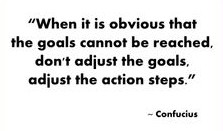Where did the time go?
This is the question we all ask, and perhaps small business owners ask the most! Many time management experts say that the key to managing our time well and being productive is figuring out what is most important, and making time to do that first. But how can we do that when it all feels so urgent?

The pros and cons of the to do list
Many of us keep detailed to-do lists. Our list will grow and grow and can become so long that it’s easier to focus on the “simple stuff” we can quickly complete and check off the list. We put off the tasks that will be most strategic for our business, the tasks that will help us grow and be a success.
Multi-tasking
As small business owners we wear many hats and must often multi-task. We have the tendency to want to do it all ourselves (even when we are stuck) and we don’t want to delegate (or don’t know how to). We are often completely consumed in the business without making time to work on the business, or we let personal stuff get in the way of how we run our business.
The effects of overwhelm
There can be a lot of emotions tied up with how we spend and “manage” our time, too. When we have too much to do we can get overwhelmed and frustrated. Our actions become non-productive. We procrastinate (ignoring what we know we must do) or we sabotage ourselves (purposely doing something counterproductive), and we end up paralyzed – blaming ourselves and sometimes even giving up.
The 80/20 Rule
One way out of this overwhelm is by paying attention to the Pareto Principle or what is often referred to as the “80/20 Rule”:

If you can figure out which tasks are producing your business’ results, you can spend more time on those activities and less time on others. Often if a task makes you feel uncomfortable or if you are putting it off, it may be a sign that it needs your attention!
As a simple way to start, Perry Marshall, author of 80/20 Sales and Marketing, recommends that we flip our daily to do list. “If there are 10 things you need to do today, odds are that one task is worth 10 times more than the rest. It is natural to want to put it off and get the other tasks done first but you need to switch it around and first focus on that one thing that is most important.” Do you need to write your marketing plan, call a disgruntled customer, create financial projections or go after a new client? Focus on that key task first.

When I talk to my business students about time management I share the same essential message. The first step is to identify the priorities — or BIG ROCKS — for your business and then structure your time to put them first. If you are a small business owner (particularly if you are just launching your businesses) you really cannot do it all. You need to focus on the key 10-20% of your business that can bring the best results now. Once you have some comfort in or mastery over that area, you can expand your focus.
Taking action
Now, it’s time to take action! Starting first thing tomorrow…
- Look at your to-do list and pick only three tasks for the day – tasks that are the most important for your business right now. (What task will help you make money now? What task will build a key business skill now? What task will help solve the most critical issue?)
- Tackle only one task at a time.
- Set a start time and end time for each task to keep yourself focused.
- Pick someone to hold you accountable and share what you are doing with them.
- Don’t forget to get rid of all distractions. Clear other work off your desk, turn off email, put down your phone… and get to it!
The reality is that your to-do list will never go away and it will probably always be long. It may be helpful to write down all your tasks so they don’t keep swimming around in your head. But the goal is to not get distracted by your list.
And sometimes is important to put away the list entirely. Our best business breakthroughs often come when we aren’t focused on our business. Sometimes it is only when we take a break, that we can gain perspective.
















